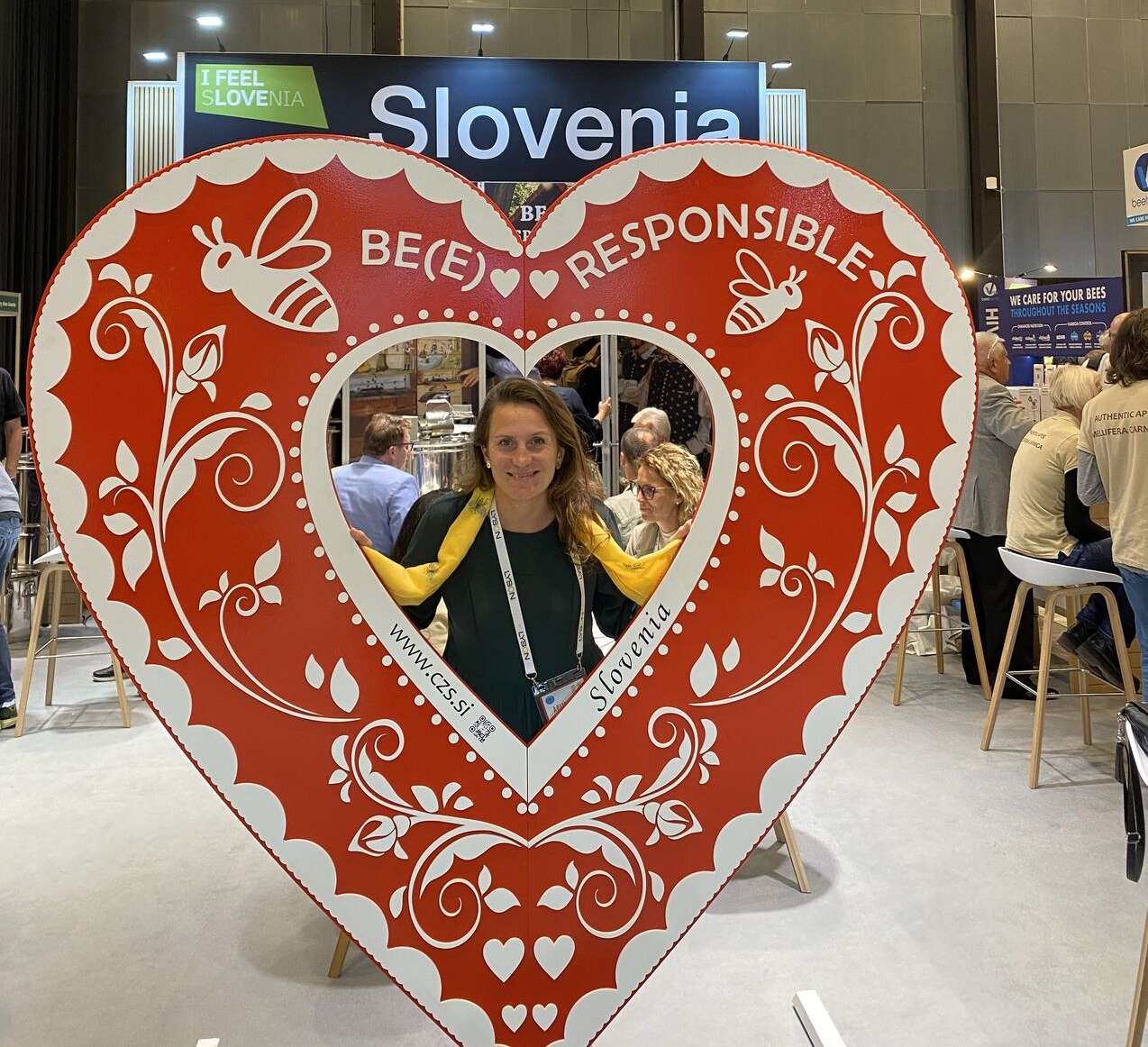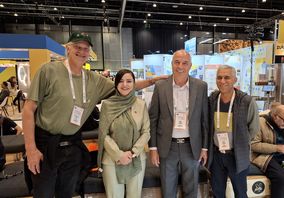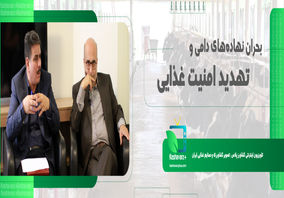تحلیل مشاور سازمانهای بینالمللی UNDP، IUCN، یونسکو، آکسفام از APIMONDIA۲۰۲۵
۵ برداشت کلیدی از آپیموندیا: آینده زنبورداری، مشارکتی، فراگیر و هوشمند است
آپیموندیا 2025 یک نشست راهبردی جهانی برای آینده سیاره ما محسوب میشد
تلویزیون اینترنتی کشاورزپلاس در ادامه رسالت خود برای بازتاب دیدگاههای بینالمللی در حوزه کشاورزی پایدار، تنوع زیستی و امنیت غذایی، نگاههای ارزشمند مارتا پانکو، مشاور برجسته کشاورزی، تنوع زیستی و انطباق با تغییرات اقلیمی را مرور میکند. خانم پانکو با بیش از ۱۰ سال تجربه همکاری با سازمانهای بینالمللی همچون UNDP، IUCN، یونسکو، آکسفام و دورکاس اید، در طراحی و اجرای برنامههای تابآور اقلیمی، تدوین برنامههای اقدام برای تنوع زیستی و توانمندسازی ظرفیتهای محلی در شرق آفریقا و اروپا فعالیت داشته است. تخصص او در زمینه حفاظت از تنوع زیستی کشاورزی، راهبردهای سازگاری اقلیمی، ارزیابی اثرات زیستمحیطی و توسعه نظامهای کشاورزی پایدار جایگاه ویژهای در پروژههای جهانی یافته است. در همین راستا، کشاورزپلاس با استناد به یادداشت تازه او درباره ۵ برداشت کلیدی از کنگره جهانی آپیموندیا، تلاش دارد توجه جامعه کشاورزی ایران را به روندهای نوین زنبورداری پایدار و رویکردهای بینالمللی در تقویت اقتصاد و آینده این صنعت جلب کند. اگر چه خبر خوب اینکه قرار است چند روز بعد از پایان آپیموندیا با مارتا که ایران را هم خیلی دوست دارد یک مصاحبه خواندنی و جالب هم داشته باشیم.

مارتا پانکو - Marta Panco - مشاور سازمانهای بینالمللی UNDP، IUCN، یونسکو، آکسفام و دورکاس اید
کنگره اخیر آپیموندیا 2025 (در کپنهاگ دانمارک) چیزی فراتر از گردهمایی علاقهمندان به زنبور بود؛ این رویداد در واقع یک نشست راهبردی جهانی برای آینده سیاره ما محسوب میشد. گفتوگوها بسیار فراتر از مدیریت کندوها رفت و بر سیستمهای اساسی مورد نیاز برای حمایت از انسانهایی متمرکز شد که خود، پشتیبان زنبورها هستند.
من که در این مباحث غرق بودم، 5 نکته بنیادین را استخراج کردهام که به باور من مسیر آینده زنبورداری پایدار در سراسر جهان را تعیین خواهند کرد:
-
موتور تغییر: توانمندسازی جوانان و زنان
پرانرژیترین بخش این کنگره بر محور جوانان و زنان بود؛ همانهایی که بهراستی کاتالیزور تغییر پایدارند. این موضوع فقط بحث عدالت جنسیتی یا سنی نیست، بلکه یک ضرورت راهبردی است.
سازمانهایی مثل Socodevi نشان دادهاند که موفقترین تعاونیها آنهایی هستند که فعالانه این گروهها را توانمند میسازند. همچنین گردهمایی جوانان زنبوردار جهان (IMYB) با ایجاد رقابت و همکاری میان نسل جوان، شور، مهارت و یک شبکه جهانی همتا به همتا را پرورش میدهد. -
خط قرمز: تأمین مالی بنیان کار است
دیگر نمیتوان سلامت زنبورها را از سلامت مالی زنبورداران جدا دید. بحث مالی در کنگره در مرکز توجه قرار داشت؛ از ارزشهای انتزاعی به سمت الگوهای عملی.
تابآوری مالی یعنی تابآوری بومشناختی. زنبورداری که از نظر مالی پایدار باشد، میتواند در تجهیزات بهتر سرمایهگذاری کند، در فصلهای سخت کندوهای بیشتری حفظ کند و از روی آوردن به روشهای مخرب و کوتاهمدت اجتناب ورزد. علاوه بر این، جریانهای نوآورانه درآمدی مانند «زنبورداری گردشگری» (Apitourism) برای تنوعبخشی به درآمد و ساختن اقتصادی مقاومتر در بخش زنبور اهمیت فزایندهای پیدا کردهاند. -
کندو دیجیتال: نوآوری فراتر از کندو
مدلهای تجاری: «زنبورداری گردشگری» مزرعه زنبورداری را به یک مقصد آموزشی و تجربی تبدیل میکند.
نوآوری در زنبورداری دیگر فقط به دستگاه عسلگیر خورشیدی محدود نمیشود؛ بلکه دیجیتال، راهبردی و تجاری است.
مرکز دیجیتال مشترک یونیدو - اسلوونی نمونهای بارز از این رویکرد است که فضایی متمرکز برای تبادل دانش جهانی ایجاد میکند.
دسترسی به بازار: ابزارهای دیجیتال به تعاونیها کمک میکنند تا مستقیم به بازارهای بینالمللی دسترسی یابند. -
قدرت همبستگی: همکاری و مشارکت
اگر یک موضوع در همه جا تکرار میشد، این بود که هیچکس بهتنهایی قادر به انجام این کار نیست. همکاری همان ضریبافزا هست. -
خیابان دوطرفه: تبادل دانش
مدل قدیمی انتقال دانش از بالا به پایین دیگر کارآمد نیست. پارادایم جدید، تبادل دوسویه دانش است.
The Internet TV channel KeshavarzPlus continues its mission to reflect international perspectives on sustainable agriculture, biodiversity, and food security by highlighting the valuable insights of Marta Panco, a prominent consultant in agriculture, biodiversity, and climate adaptation.
Ms. Panco has over 10 years of experience working with international organizations such as UNDP, IUCN, UNESCO, Oxfam, and Dorcas Aid, engaging in the design and implementation of climate-resilient programs, development of biodiversity action plans, and local capacity building in Eastern Africa and Europe. Her expertise in agricultural biodiversity conservation, climate adaptation strategies, environmental impact assessment, and sustainable farming systems has earned her a distinguished position in global projects.
In this context, KeshavarzPlus, drawing on her recent reflections on the five key takeaways from the Apimondia World Congress, seeks to raise the awareness of Iran’s agricultural community about innovative approaches in sustainable beekeeping and international trends that strengthen the economy and future of the industry. The good news is that a few days after the conclusion of Apimondia, we will have an engaging and
insightful interview with Marta, who has expressed a special fondness for Iran.
5 Key Takeaways from Apimondia: The Future of Beekeeping is Collaborative, Inclusive, and Smart
The recent Apimondia Congress was more than a gathering of bee enthusiasts; it was a global strategy session for the future of our planet. The conversations moved far beyond hive management, focusing on the essential systems needed to support the people who support the bees.
Having immersed myself in the discussions, I've distilled five fundamental takeaways that I believe will define the trajectory of sustainable apiculture worldwide.
1. The Engine of Change: Youth and Women Empowerment
The most vibrant energy at the conference came from the focus on youth and women as the true catalysts for sustainable change. This isn't just a matter of equity; it's a strategic imperative.
Organizations like Socodevi have demonstrated that the most successful cooperatives are those that actively empower these groups. By gathering young beekeepers from around the world to compete and collaborate, the IMYB fosters passion, skills, and a global peer network.
2. The Bottom Line: Financing is the Foundation
We can no longer separate the health of bees from the financial health of beekeepers. The discussion on finance was central, moving from abstract value to practical models. Financial resilience is ecological resilience. A beekeeper who is financially stable can invest in better equipment, sustain more hives through tough seasons, and avoid harmful, short-term practices. Furthermore, innovative revenue streams like apitourism are becoming critical for diversifying income and building a more resilient bee economy.
3. The Digital Hive: Innovation Beyond the Hive
Innovation in beekeeping is no longer just about the solar-powered honey extractor. It’s digital, strategic, and business-oriented.
The upcoming UNIDO-Slovenia digital hub is a prime example, creating a centralized space for global knowledge exchange.
Business Models: Apitourism is an innovative business model that turns a beekeeping operation into an educational and experiential destination.
Market Access: Digital tools are helping cooperatives reach international markets directly.
4. The Power of Unity: Cooperation and Collaboration
If there was one universal theme, it was that no one can do this alone. Cooperation is the multiplier.
5. The Two-Way Street: Knowledge Exchange
The old model of top-down knowledge transfer is obsolete. The new paradigm is two-way knowledge exchange.
What was your biggest takeaway from the recent conversations in our industry? I'd love to continue the discussion in the comments below.





دیدگاه تان را بنویسید